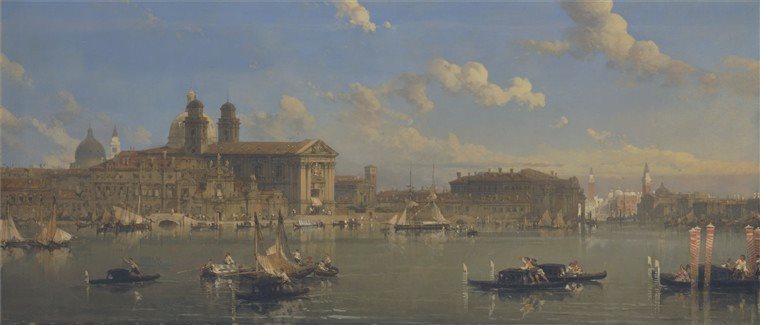This weekend I would like to reflect upon an investing opportunity which has not yet been mentioned here. Art is has existed since the first human beings ever inhabited the Earth and it has always been the best way to leave something after yourself, to prolong your life and even become immortal.
Most of the time, admirers and collectors of pieces of art did not even guess about the price the piece can obtain in the future. It wasn't long ago that there was collecting art, and there was investing in art. Rarely did the two meet. Collectors bought waht they liked, trying not to overpay.
However, in recent decades, the equation changed, as collectors started taking into account the long-term profit part of the purchase.
Today I want to post an interview which was first published in the Wall Street Journal. The group: Michael Plummer, a partner in New York City-based ArtVest Partners LLC, a provider of art-market investment advice; Constanze Kubern, a London-based art consultant and former manager of an art investment fund; Philip Hoffman, chief executive of London's Fine Art Fund Group; and Kathryn Graddy, an economics professor at Brandeis University in New York, whose research focuses on art markets.
WSJ: Does investing in art provide solid returns? If so, over what period?
MR. PLUMMER: We tell clients that they should target [returns] in the midteens, net of fees and expenses, but there is not yet a lot of evidence that this can be easily achieved. The art-fund industry is only 10 years old.
MS. KUBERN: As a rule of thumb, 8% annualized net return over a minimum holding period of five years is a realistic figure.
MR. HOFFMAN: It is almost impossible to say what a reasonable return would be as there are so many variants. I can, however, confirm as an example that a Frank Auerbach painting we purchased in 2005 for $1.1 million sold in 2006 for $2.3 million. We generally look for annual net returns of 7% to 12% for our investors.
MS. KUBERN: I agree, but unfortunately one piece does not represent an entire collection, nor does it give any indication on what investors' returns are after expenses and fees are deducted. Art is a high-risk investment and past performance is not indicative of future results.
PROF. GRADDY: A number of economists have estimated the returns to art over a very long period. Overall, estimates range from about 1% to about 5% real returns. Clearly, there is not a lot of consensus on long-run returns to holding art, other than that long-run real returns are less than investing in stocks.
MR. HOFFMAN: That is generalizing, and the accurate data to base that analysis on is incomplete.
Yes, if someone built a diversified art portfolio, with works bought solely at auction, where there are buyer premiums, 1% to 5% is probably on target. However, I don't pay high auction premiums and high gallery commissions, because most of the art I buy is done privately—directly from the sellers—and 50% of the art I sell is done privately as well. Even when I buy at auction, I pay lower premiums, because I am an institutional investor and, as a result, am able to obtain volume discounts that private buyers aren't eligible for. Over the years, the Fine Art Fund has averaged 19% gross returns, before management fees are taken out.
WSJ: How does investing in artwork differ from investing in equities, startups or real estate?
PROF. GRADDY: One would expect to earn dividends from equities, a share of the profits from startups, and rents from real estate. Art pays dividends in the form of enjoyment and social capital. Hence, the monetary returns to art should be less than other forms of investible assets. Liquidity in selling art is also substantially less than in equities and even real estate. Furthermore, commissions are quite high. Buyers pay commissions at auction houses ranging from 12.5% to 25%, depending on the sale price, and dealers' commissions are privately negotiated with the seller.
MR. HOFFMAN: The transaction costs in art are, by and large, much higher than in stocks and real estate, but the opportunity to make gains in the short-term are also much higher. With stocks, in a year or two, you might be able to make 2% to 5% but, with art, you have the opportunity to make serious money. I've made 100% returns on many deals.
WSJ: Which art categories have the most and least investment potential?
MS. KUBERN: The old masters category has shown stable results over the past 10 years and it will probably remain at that level. Prices for postwar and contemporary have also reached record highs, but an ever-growing collectors base and a slowing down in supply of museum-quality works by blue-chip artists is pushing up prices even further.
MR. PLUMMER: Old masters is the least-volatile category, but it has the least growth potential of all of the major sectors. Within the impressionist and modern sector, Picasso and possibly Warhol (in the contemporary sector) are now slower-growing. The contemporary sector is where all the growth is truly happening now, but this is also a cause for concern. In the market crash of 2008, contemporary art prices fell by 50%.



